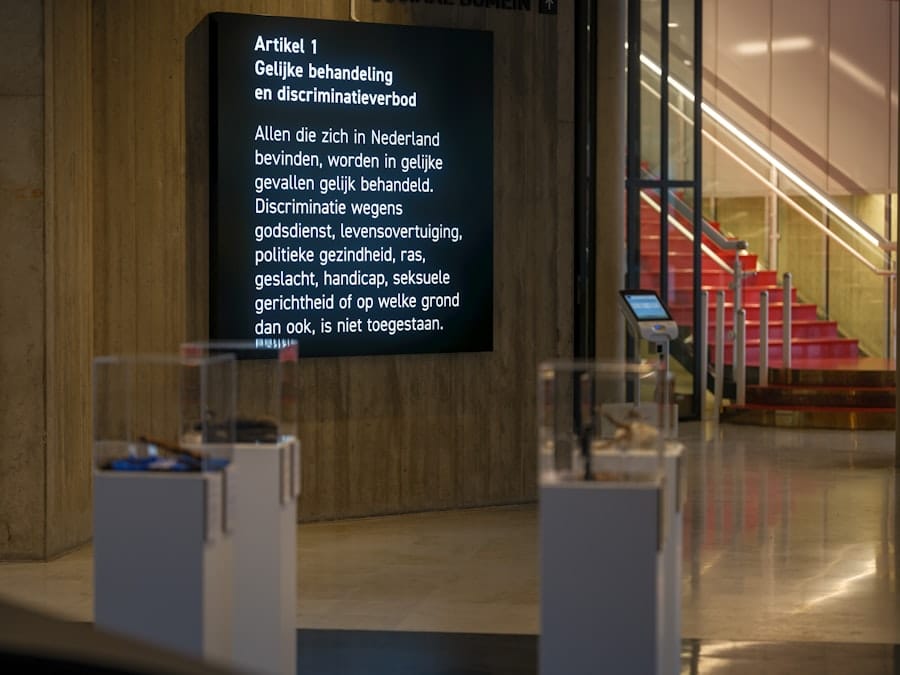The advent of wireless networks has revolutionized various sectors, and the realm of digital museum curation is no exception. As museums increasingly embrace technology to enhance their offerings, wireless networks serve as the backbone for a multitude of digital initiatives. These networks facilitate seamless connectivity, enabling museums to present their collections in innovative ways that engage visitors and enhance their overall experience.
The integration of wireless technology into museum environments not only transforms how artifacts are displayed but also how they are interacted with, creating a dynamic interplay between the physical and digital realms. In the context of digital museum curation, wireless networks enable the deployment of interactive exhibits, augmented reality experiences, and mobile applications that provide visitors with rich, contextual information about the artifacts on display. This technological shift allows curators to rethink traditional exhibition strategies, moving beyond static displays to create immersive environments that invite exploration and interaction.
As museums continue to adapt to the digital age, understanding the role of wireless networks becomes essential for curators aiming to enhance visitor engagement and preserve cultural heritage.
Key Takeaways
- Wireless networks play a crucial role in digital museum curation by enabling connectivity and access to digital collections and exhibits.
- Wireless networks enhance visitor experience by providing seamless connectivity and access to interactive digital content within the museum.
- Security and preservation of digital artifacts are ensured through the use of wireless networks, which enable secure data transmission and storage.
- Collaboration and connectivity are facilitated in digital museum curation through the use of wireless networks, allowing for seamless communication and sharing of resources.
- The impact of wireless networks on curatorial practices is significant, as it enables curators to access and manage digital collections more efficiently and effectively.
The Role of Wireless Networks in Enhancing Visitor Experience
Personalized Experience through Mobile Applications
Many museums have developed mobile applications that utilize wireless connectivity to deliver audio guides, virtual tours, and detailed descriptions of exhibits directly to visitors’ smartphones. This immediacy allows guests to engage with the material at their own pace, fostering a more personalized experience.
Interactive Content and Augmented Reality
Visitors can delve deeper into the stories behind artifacts, access multimedia content such as videos or interviews with artists, and even participate in interactive quizzes that reinforce their learning. Moreover, wireless networks enable the implementation of augmented reality (AR) applications that overlay digital information onto physical exhibits. For example, a visitor standing in front of a historical painting might use an AR app to see a 3D reconstruction of the scene depicted or to view additional context about the artist’s techniques and influences.
Enhancing Understanding and Encouraging Exploration
This blend of physical and digital experiences not only captivates visitors but also enhances their understanding of the artwork. By leveraging wireless technology, museums can create an engaging atmosphere that encourages exploration and interaction, ultimately leading to a more memorable visit.
Security and Preservation of Digital Artifacts through Wireless Networks

While enhancing visitor experiences is a significant benefit of wireless networks, they also play a crucial role in the security and preservation of digital artifacts. Museums are increasingly digitizing their collections to safeguard against physical deterioration and loss. Wireless networks facilitate the secure transfer and storage of these digital assets, ensuring that high-resolution images, videos, and other media are preserved for future generations.
By employing robust encryption protocols and secure cloud storage solutions, museums can protect sensitive data from unauthorized access while maintaining the integrity of their collections. Additionally, wireless networks enable real-time monitoring of environmental conditions within museum spaces. Sensors connected through these networks can track temperature, humidity, and light levels—factors that significantly impact the preservation of artifacts.
This proactive approach not only helps in preserving physical artifacts but also ensures that digital representations remain accurate and reliable over time.
Collaboration and Connectivity in Digital Museum Curation
The collaborative potential unlocked by wireless networks is another transformative aspect of digital museum curation. Curators can easily share resources, knowledge, and expertise across institutions, fostering a spirit of cooperation that enhances the quality of exhibitions. For example, museums can collaborate on joint exhibitions by sharing digital assets and curatorial insights through secure online platforms.
This connectivity allows for a more diverse range of perspectives and interpretations to be included in exhibitions, enriching the visitor experience. Furthermore, wireless networks facilitate partnerships with technology companies and educational institutions, enabling museums to leverage cutting-edge tools and research in their curation efforts. Collaborative projects can lead to innovative solutions for presenting artifacts or developing educational programs that resonate with contemporary audiences.
By embracing connectivity through wireless networks, museums can position themselves as dynamic hubs of cultural exchange and knowledge sharing.
Access to Digital Collections and Exhibits through Wireless Networks
One of the most significant advantages of wireless networks in digital museum curation is the democratization of access to collections and exhibits. With robust wireless infrastructure in place, museums can offer online access to their digital collections, allowing individuals from around the world to explore their holdings without needing to visit in person. This accessibility is particularly important for marginalized communities or those unable to travel due to financial or physical constraints.
By providing virtual tours and online exhibitions, museums can reach broader audiences and foster a greater appreciation for cultural heritage. Moreover, wireless networks enable museums to implement interactive kiosks throughout their physical spaces that provide additional information about exhibits. Visitors can use these kiosks to access multimedia content or participate in interactive experiences that deepen their understanding of the artifacts on display.
This integration of digital resources within physical spaces creates a cohesive experience that bridges the gap between online and offline engagement.
The Impact of Wireless Networks on Curatorial Practices

Data-Driven Decision Making
By analyzing visitor data, curators can identify trends and patterns that inform their decisions. For example, if analytics show that visitors spend more time at interactive displays than traditional ones, curators may prioritize interactive elements in future exhibitions. This data-driven approach enables curators to create more engaging and effective exhibits that resonate with their audience.
Enhanced Collaboration and Agility
Wireless networks also facilitate seamless communication among curatorial teams, enabling more agile decision-making processes.
This flexibility fosters a culture of innovation within museum staff, allowing them to respond quickly to changing audience expectations and trends.
A New Era of Museum Curation
As curatorial practices evolve alongside technological advancements, museums are better equipped to meet the changing needs of their audiences. By leveraging wireless networks and data analytics, museums can create more engaging, interactive, and relevant experiences that attract and retain visitors. This new era of museum curation is characterized by innovation, agility, and a commitment to delivering exceptional visitor experiences.
Advancements in Digital Preservation and Conservation with Wireless Networks
The intersection of wireless networks and digital preservation has led to significant advancements in conservation practices within museums. With the ability to digitize artifacts at high resolutions, museums can create detailed records that serve as both documentation and preservation tools. Wireless networks facilitate the transfer of these large files to secure storage systems where they can be accessed by conservators for analysis or restoration efforts.
Moreover, emerging technologies such as machine learning and artificial intelligence are being integrated into preservation practices through wireless connectivity. For example, AI algorithms can analyze images of artifacts to detect signs of deterioration or damage that may not be visible to the naked eye. By leveraging these technologies, conservators can proactively address preservation issues before they escalate into more significant problems.
The synergy between wireless networks and advanced preservation techniques ensures that cultural heritage remains intact for future generations.
Future Trends and Innovations in Wireless Networks for Digital Museum Curation
As technology continues to evolve at a rapid pace, the future of wireless networks in digital museum curation holds exciting possibilities. One emerging trend is the expansion of 5G technology, which promises faster data transfer speeds and lower latency. This advancement will enable even more sophisticated applications such as real-time virtual reality experiences that immerse visitors in historical contexts or artistic processes.
Museums could offer live-streamed events or interactive workshops that connect audiences with artists or experts from around the globe. Additionally, the integration of Internet of Things (IoT) devices within museum spaces will further enhance visitor engagement and operational efficiency. Smart sensors could monitor visitor flow patterns and adjust lighting or climate controls accordingly to optimize both comfort and artifact preservation.
Furthermore, IoT-enabled devices could provide personalized experiences by recognizing returning visitors and tailoring content based on their previous interactions. In conclusion, as wireless networks continue to advance, they will undoubtedly play an increasingly vital role in shaping the future landscape of digital museum curation. The potential for innovation is vast, promising new ways for museums to connect with audiences while preserving cultural heritage for generations to come.
In a related article, Enicomp explores the features of the Samsung Galaxy Book Odyssey, highlighting its powerful performance and innovative design. This article provides valuable insights for tech enthusiasts looking to invest in a new laptop. To learn more about this cutting-edge device, check out the full article here.
FAQs
What is a wireless network?
A wireless network is a type of computer network that uses wireless data connections between network nodes. It allows devices to connect to the network without the need for physical cables.
How do wireless networks support digital museum curation?
Wireless networks support digital museum curation by enabling the connectivity of various digital devices such as smartphones, tablets, and interactive displays within the museum. This allows for the seamless sharing and access of digital content, enhancing the visitor experience.
What are the benefits of using wireless networks in museums?
Using wireless networks in museums allows for greater flexibility in the placement of digital exhibits, reduces the need for physical infrastructure, and enables interactive experiences for visitors. It also facilitates real-time updates and content delivery, enhancing the curation and management of digital assets.
What are some challenges of implementing wireless networks in museums?
Challenges of implementing wireless networks in museums include ensuring reliable connectivity throughout the museum, managing network security to protect digital assets, and addressing potential interference from other wireless devices or networks in the vicinity.
How can wireless networks enhance the accessibility of digital museum collections?
Wireless networks can enhance the accessibility of digital museum collections by enabling remote access to digital exhibits, providing interactive experiences for visitors with disabilities, and facilitating the creation of virtual tours and online exhibitions.

